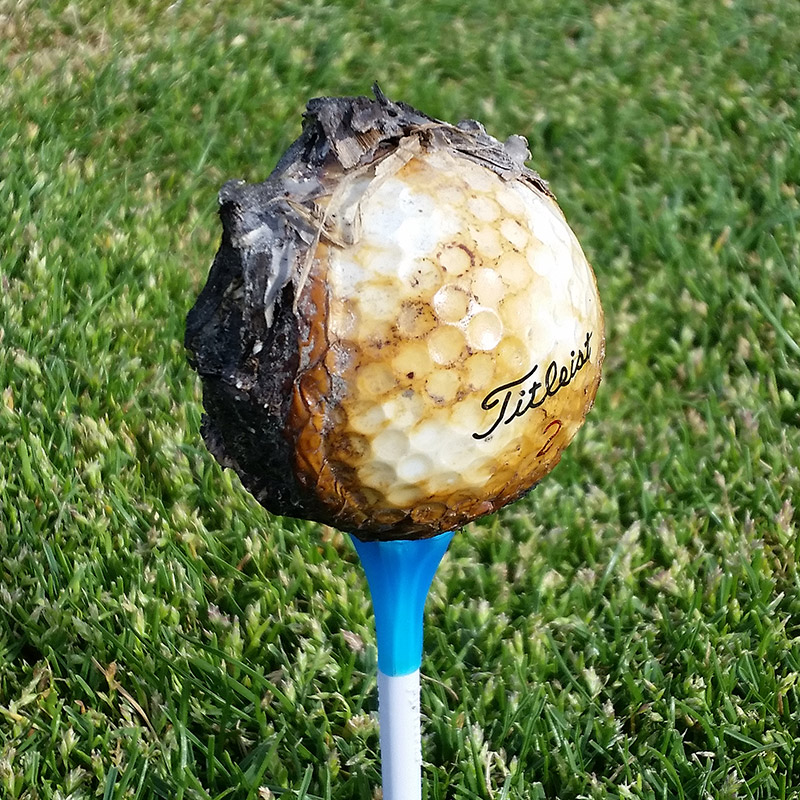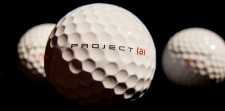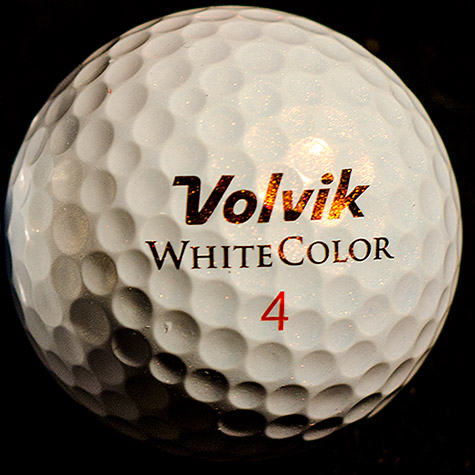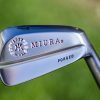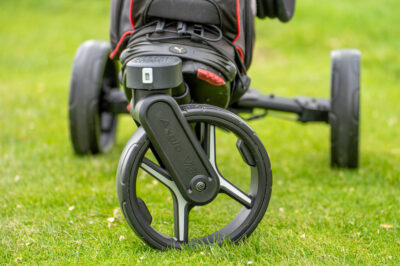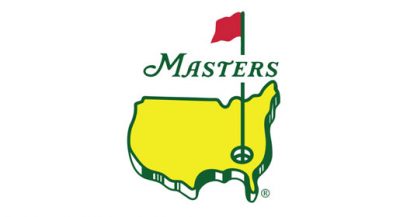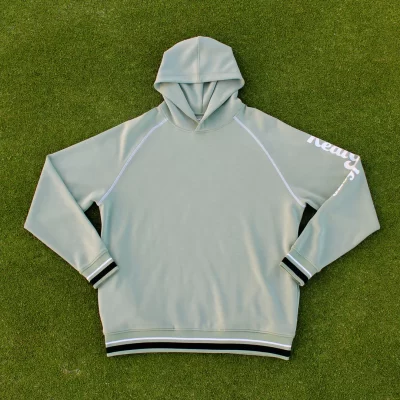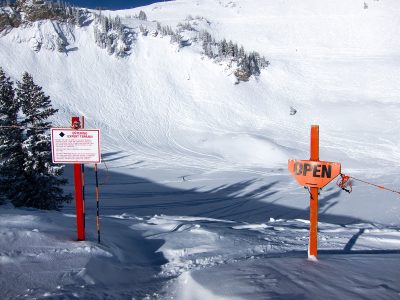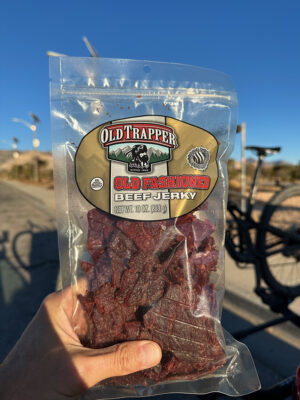TaylorMade Tour Preferred Golf Ball Review
Categories: Golf Balls • Golf Equipment • Golf Gear • Reviews
Tags: Golf Balls • TaylorMade
This is the second review of three TaylorMade golf ball models I’m in the process of reviewing. The first was the Project (a) ball, a ball designed more for amateurs with slower swing speeds. This review features the TaylorMade Tour Preferred golf ball. The “TP” is a “tour” level ball, meaning their highest performance and most expensive. This is one which many TaylorMade PGA Tour players use, and for good reason. Let’s take a look.
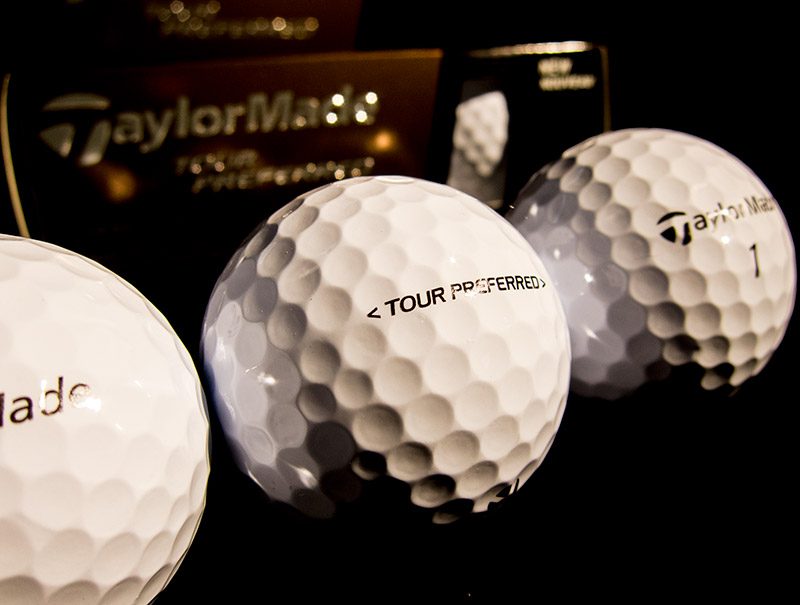
TaylorMade Tour Preferred Golf Ball
Construction
The Tour Preferred ball is a four layer ball. Each layer features materials and engineering which give the ball specific performance characteristics. For instance, the core may provide the primary distance of the ball while the outer layer or cover provides much of the ball’s feel and spin. Most tour balls, the Tour Preferred included, have a urethane cover which provides the softest and best spin in the sort game.
Together these layers and their engineering produce the following performance characteristics in the TaylorMade TP ball:
- Low driver spin
- Medium-high mid- to long-iron spin
- High short iron and wedge spin
- High spin inside of 100 yards
These characteristics are slightly different than the Tour Preferred X ball, which I will be reviewing soon. The difference between the two is that numbers two and three above are swapped. The X ball has medium mid- to long-iron spin and medium-high short iron and wedge spin.
Low driver spin means more accuracy off the tee and longer distance. High spin inside 100 yards means short game control.
On The Course
I don’t do TrackMan or FlightScope testing on my golf balls and clubs, just real world golf on real golf courses. If you need to know the exact spin rate off a 9-iron at X miles-per-hour swing speed with x-launch angle, there are other sites full of that information. Google it.
Off the tee the TP feels very solid and I can hit it as far as just about any other ball I’ve tested. I can feel the ball compress and I’m able to work the ball as needed, though my swing lately seems to only want to go straight or draw. Don’t ask me to hit a fade right now. I’ve hit a few massive drives (for me), and even some massive 3-woods with this ball.
Iron feel of the TP is excellent. The ball is soft enough for me to feel it on the face and tell if I’m clipping it just right, compressing it. Those pure shots produce pure results and birdie opportunities.
Inside 100 yards (admittedly my weakest link) I have plenty of spin. Sometimes I can actually clip the ball to crisply when pitching or chipping and it will check too much. That’s not the ball’s fault. It the fault of my skill level, short game distance control.
Lastly, the fee of the putter is great. The cover feels soft and I have total distance control with the flat stick.
Not Just For Tour Players
Over many years one of the main reasons amateurs were not well off hitting “tour” balls is because of the compression of the ball and maxiumum distance. High swing speeds were needed to get full compression out of them. That does not seem to be the case with the TP ball. I have a driver swing speed of about 100MPH, and 105 if I’m really killing it. With the right driver head, shaft, and this ball, I can hit them quite far. I don’t feel like I’m losing distance with the TP due to not having a high enough swing speed.
The other component to “tour” balls is the high spin. The engineering of this ball gives the player, amateur or pro, the high spin where it is needed in the shorter irons and short game. So once again, an amateur could benefit from playing this ball.
Conclusion
Whether you are an amateur or a pro, the TaylorMade Tour Preferred golf ball is a high performance option.
Related Links
TaylorMade Project (a) golf ball review.
This is Undoubtedly the HOTTEST Golf Ball I’ve Ever Hit
Categories: Golf • Miscellaneous
Tags: Golf Balls
This ball goes so far and high it burned up on re-entry into the atmosphere. I hit this ball so hard it burst into flames.
Actually this ball is one of hundreds one can find on my home course, burned to a crisp. My course is so swampy that the foliage grows so high that they burn it down so you can see the fairway from the tee.
This ball pictured above caught my eye, but there were others just as fascinating. One was a wound ball (the kind with rubber bands inside) and the side of the ball had burned open. The rubber bands had been shot outside of the hole, like the ball barfed them out. I should have shot a picture of that one too, but I was too busy trying to follow up an 11 with a birdie…
Don’t ask.
TaylorMade Project (a) Golf Ball Review
Categories: Golf • Golf Balls • Golf Equipment • Golf For Women • Golf Gear • Reviews
Tags: Golf Balls • TaylorMade
Soft golf balls are the rage right now. That’s great for me as they don’t aggravate my tennis/golfer’s elbow and my driver swing speed is around 100mph. The problem with many of the softer balls which have been produced over the last few years is that they don’t have good spin characteristics in the short game end of things. That’s where balls like the TaylorMade Project (a) are filling the gap. The (a) in the name stands for “amateur.” The ball is designed for amateur swing speeds but has a cover design and materials which produce “tour” level spin and feel in the short game.
Construction
The Project (a) is a 3-piece ball, meaning it has three separate layers. Each layer gives the ball certain performance characteristics.
Most “tour” or high quality golf balls feature a thin cover made from a material called urethane. Urethane is found in the covers of nearly every great golf ball, but not often found on the covers of amateur balls. The Project (a) ball does feature a soft urethane cover. This is what gives this ball far more spin from 30 yards an in than most mid-level amateur golf balls.
The next layer is the mantle layer. This layer also contributes to the ball’s short game spin.
The innermost layer, called the core, is the powerhouse of the ball. The core gives the ball its distance and feel on full shots, and especially off the driver.
My unscientific and rough measurement of the ball’s compression via a very cool golf ball compression measuring tool called the Hexcaliber, shows the ball to be just above a 90.

TaylorMade Project (a) Golf Ball Compression Measurement
In the “old” days tour swing speeds matched up with balls having 100 compression or higher. Amateur golf swing speeds were between 85-100, and women’s balls around 80 compression. These days there are many balls in the 80 range, and even some down at 50 or less.
Hands-On – On The Course
I’ve quite enjoyed my testing rounds with this ball. The elbow feels great. Harder golf balls beat up my golfer’s elbow, which is why I can’t play them. No issues with this softer ball.
The compression level of this ball works well with my very amateur swing speed. I have plenty of distance. Plenty. Like I mentioned, I top out at around 100mph but can get it up to maybe 105 if I’m swinging hard.
The feel the ball has on iron shots is great. I can feel the ball compress and I can sense the control I have when working the ball either direction or trying to control my “traj” (trajectory).
As advertised this ball is great from not only 30 yards and in, but I’d say from 100 yards and in. Short game is my achilles heel but I’ve had success chipping and pitching with this ball and getting that little bit of bite around the greens.
Conclusion
I’ve found the TaylorMade Project (a) golf balls on Amazon for under $32 per dozen, which is close to half the price of some “tour” balls. And for the amateur this ball may be better than those more expensive balls due to the slightly lower compression. The cover is the same.
If you’re a regular golfing Joe with an average swing speed who needs an affordable high performing golf ball, the Project (a) could be the ticket. These could also be good balls for some of the better lady golfers.
Father’s Day is coming up by the way. A box of TaylorMade Project (a) golf balls would make a great Father’s Day golf gift.
First Look: 2015 TaylorMade Tour Preferred Golf Ball
Categories: Golf Balls • Golf Equipment • Golf Gear
Tags: Golf Balls • TaylorMade
Today I began my testing of the new TaylorMade Tour Preferred golf ball having completed my testing of the Project (a) ball. The TP is a “tour” level ball, meaning their highest performance and most expensive. Today’s round was the first of several I’ll be doing with this ball, like I do when I test any golf ball. No one-hit reviews here.
Stay tuned for my review on the TaylorMade Tour Preferred ball soon.
Volvik White Color S3 Golf Ball Review
Categories: Golf Balls • Golf Equipment • Golf For Women • Golf Gear • Reviews
Tags: Golf Balls • Volvik
Ya gotta love how funny the language barrier can be sometimes. Case in point is this review of the “White Color” S3 Golf Balls from Volvik. Volvik, I believe a South Korean company, is a maker of very colorful golf balls. I’ve seen Volvik’s transparent models, brilliantly colored models, chrome models… you name it. I guess when you make so many varied and unique colors, you have to call the white ball a white ball.
Features
The white color of this ball is vibrant and glows in light unlike other golf balls due to a hint of pearlescent blue color mixed in. The ball is easier to spot on the course than a typical other white ball.
White isn’t the only feature of this golf ball. This is actually a “tour” quality ball, meaning it is high performance with high spin and feel. The outer layer or cover of the ball is made of the material most top golf balls use, urethane. Urethane is where the ball gets its stopping and short game spin and softer feel around the greens.
The inner cover is the 2nd layer of three in this ball. This layer provides some distance qualities and also helps produce controlling spin.
Finally the core or center of the ball, yes like the core of the earth, is the power center. The elasticity or rebounding effect of the core gives the ball its distance and solid feel off the driver.
On The Course
I’ve enjoyed playing many rounds with the White Color ball. I poke fun at the name and tell my friends who are looking for my ball in the bushes to look for the “white color” one. It provides us some clean entertainment.
Seriously though, the ball performs very well in both the distance and control categories. It is a solid all-around ball.
Feel-wise the ball is a little harder and heavier than balls I typically play, but that is likely why the ball is so durable. Despite the soft “tour” cover these last forever. You’re more likely to lose one in the bushes or a lake long before you could wear one out.
Conclusion
I’d rank the White Color ball’s performance at about 80-90% of Titleist ProV1’s, Bridgestone B330’s, and other high-end golf balls. Close but not equal. The White Color S3 is a solid golf ball for mid to lower handicap golfers.
« Previous 1 2 3 4 5 6 … 8 Next »

